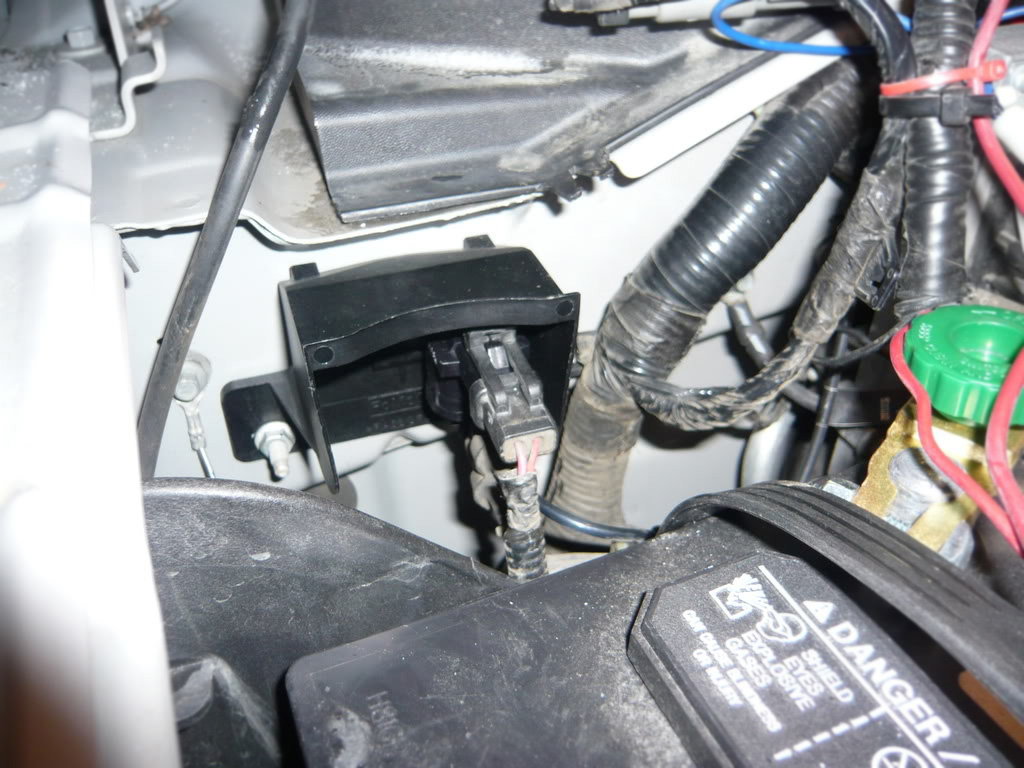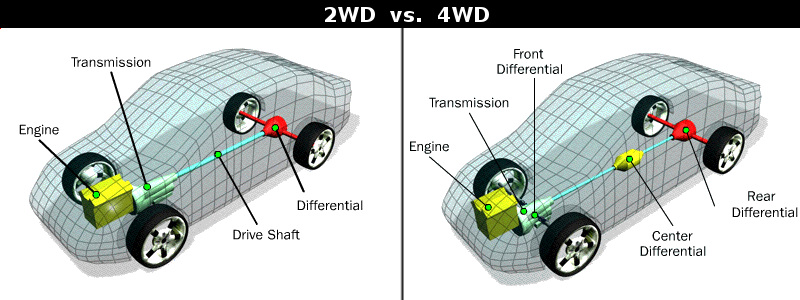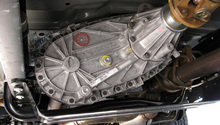Ford F-150: 4WD General Information
The 4WD system in a truck might seem a little complicated, but understanding how your F-150 or Super Duty moves its power around is helpful when understanding how to drive a 4WD.
This article applies to the Ford F-150 (2004-2014).
During normal driving, a four-wheel drive (or 4WD) vehicle will act the same as a 2WD, with slightly worse fuel mileage due to the added weight. 4WD is mainly used in poor driving conditions such as snow or mud. It's during these events that you will notice the major benefits in a 4WD system.
The difference between a 2WD and 4WD are the added components on the latter, including front axles, front differential, a second driveshaft, transfer case, and the 4WD switch or lever inside the cab. When in 2WD, the front axles are unlocked, this means they aren't connected to the drive line and thus are receiving no power from the drive train. As soon as you switch into 4WD, the front axles lock electronically and they will begin to receive power. This benefits you because now not only do you have two extra tires helping you move, but also those two extra tires are receiving the engine weight to help them gain traction. The major difference you'll notice while in 4WD is that you won't have as large of a turning radius due to the cv axles being locked in.
Component Breakdown
Front Drive Axles (CV Axles)

The cv axles are the link between the drive train to your front wheels. Depending on your vehicle year, when in 2WD these will spin with the wheel all the time or these will spin only when 4WD is engaged. Attempting to turn too sharply whie in 4WD mode will put stress on these joints, causing them bind up and make a popping noise. Overtime these will wear out and need to be replaced. They will also need to be replaced when the dust boots get torn. Symptoms would include a grinding and/or a constant popping noise from them when in 4WD.
Front Axle Actuators

These rings are the mechanism that engage your front wheels when you put your truck into 4WD. They're attached to the wheel spindle and are controlled with vacuum lines from the IWE Solenoid. Often times when these systems fail, they'll make clicking noises. A common symptom of failing wheel actuators is a truck that won't shift into 4WD.
Transfer Case

The transfer case is connected to the end of the transmission, where the drive shaft output would be on a 2WD. In the image above, you'll notice that there is two yokes on the transfer case, one for a drive shaft to the front wheels and one for a drive shaft to the rear wheels.
IWE/Solenoid System

Fgure 4. This is the original solenoid IWE solenoid. It's bolted to the firewall behind the battery. It fails because of it's exposure to water and dirt. 
Figure 5. This is the updated solenoid. Notice the plastic shielding to protect it from the elements.
In a very basic sense, the IWE is what sends the signal to the actuators to lock in the cv axles. The system is compromised of the solenoid, check valves, IWEs (spring-loaded actuators), vacuum lines, and the vacuum reservoir. When in 2WD the solenoid applies vacuum to the actuators to keep the axles unlocked, when 4WD is engaged the vacuum is released and the axles lock in. The solenoid does fail over time. Luckily it's a simple fix. Symptoms of the failure would be a whirring or whining sound from the front hubs that goes away when in 4WD. When the IWE fails, it should be replaced immediately to prevent damage to the axle hubs.
Common Questions
How can I make my 2WD a 4WD?

I see this question asked a lot and the general response is just not to do it. I usually give this response as well because it's just not cost effective, you'll end up $5,000-10,000 more in the hole than if you just sold the 2WD and bought a 4WD. However if you wish too, I recommend going to a solid axle swap to make it more worth the while. A short list of parts you'll need is a transfer case, front driveshaft, 4WD transmission, 4WD switch or lever, 4WD suspension components, and probably the frame mounts as well from a 4WD for the parts.
(Related Discussion: Typical F150 2WD to 4WD Conversion Inquiry - F150online.com)
What are the driving differences in 4WD?
The biggest difference you'll notice is the smaller turning radius due to the axles being locked in. You'll also notice that it will feel like you have less power, which is due to some of the power being lost in the front drive train as it's sent to the front axles.
When should I not use 4WD?
When it's not needed. Yes it's always good to use it off and on throughout the year for short periods to confirm its working condition, but you need to be smart about where you use it. I see a lot of forum posts where people say their 4WD system is broken because it made weird noises when they tried it on dry pavement. This is because the system is made to only be used when the driving conditions will allow for a slight loss of traction, this is necessary to allow the front wheels to rotate properly and not cause the front axles to bind and possibly break. If it's dry outside and you want to try it, at the very least try it in the grass.
Common Issues
IWE Solenoid Failure and Replacement
To replace them you simply unplug the wiring harness, disconnect the vacuum lines, unbolt from the firewall, and then do the reverse for the install. Like stated above, when the symptoms arise pointing to an IWE failure, you should replace it immediately.
(Related Discussion: IWE Solenoid failure and replacement - F150online.com)
Technical Service Bulletins (TSB)
- 09-20-14 10/19/2009 A/T - Uncommanded TCC Lock Up On 1-2 Upshift
- 08-21-11 10/27/2008 4X4/AWD System - Shudder On Accel/Decel/Binding On Turns
- 07-10-9 05/28/2007 Drivetrain - Highway Speed Vibration
- 06-26-1 01/08/2007 M/T - Mercon(R) V ATF Usage Information
- 06-19-16 10/02/2006 Drivetrain - Vibration On Hard Acceleration
- 06-11-12 06/12/2006 Frame - L/H Front Differential Bracket Frame/Separation
- 06-9-8 05/15/2006 Drivetrain - ESOF System Inoperative/DTC P1867
- 06-8-15 05/01/2006 Axle - Intermittent Noise, 4 X 4 Inop. DTC's 1979/1980
- 06-7-1 04/17/2006 Vehicle - Tow Capability/Service Kit Requirements
- 05-21-18 10/31/2005 A/T - Shift Cable Repair or Replacement
- 14-0100 05/09/2014 A/T - Squawk Noise on 5-3 Downshift
- 14-0090 05/01/2014 Drivetrain - Click/Snap Noise on Initial Acceleration
- 13-6-8 06/07/2013 A/T - High Start From a Stop, Wrench Lamp ON, Possible DTC's
- 13-4-9 04/18/2013 A/T - High Gear Engagement From A Stop, MIL, DTC P0720/P0722
- 12C23S1 05/30/2012 Recall - A/T Range Sensor Inspection/Replacement






